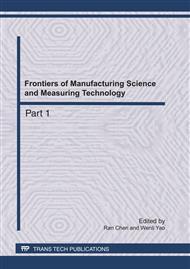p.888
p.892
p.896
p.900
p.905
p.910
p.916
p.920
p.925
Comparison of Indoor Air Quality Measurement by Using Direct Detection Apparatus and Standard Methods
Abstract:
People usually spend almost 90% of time under various indoor surroundings in their daily lives, and thus the impact of indoor air quality (IAQ) on human health has received much attention recently. In this study, 20 public sites were selected as case studies to compare the difference of indoor air quality measurements. Indoor air quality was first assessed by direct detection apparatus, including CO2, CO, HCHO, TVOCs, PM10, PM2.5, and O3. Based on the results of walk-through detection, indoor air contaminants at hot-spot location were measured in a 24 hour period by the EPA standard method. The use of direct detection apparatus has the advantages of easy operation, high mobility, rapid detection, and less cost. However, official data of indoor air quality measurement is based on the detailed measurement by Taiwan EPA’s standard methods that possess high precision and accuracy. The comparison of direct detection data and the detailed measurements by standard methods illustrated that there exists a high linear relationship for CO2, PM10 and PM2.5 measurements. It means that direct detection data of CO2, PM10 and PM2.5 are reliable, and direct detection apparatus can be applied to monitoring of these indoor air contaminants for the better control of their accumulations.
Info:
Periodical:
Pages:
905-909
Citation:
Online since:
May 2011
Authors:
Keywords:
Price:
Сopyright:
© 2011 Trans Tech Publications Ltd. All Rights Reserved
Share:
Citation:


